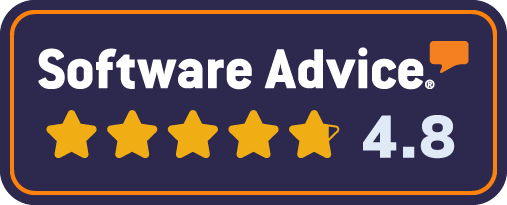How long does it take your sales and marketing team to follow up with a lead? The response time is, for most companies, an average of 47 hours. In an environment where buyers want immediate attention, that kind of delay just won’t cut it. In addition to essentially wasting expensive leads, it can label your business as being unresponsive and neglectful of customers. Companies that perform best at converting leads into customers are those who prioritize speed and have a process for engagement. They also recognize the value in focusing on acquiring the right kinds of leads. Here’s the good news: every company has the ability to make this happen, but it takes focus and dedicated help to coordinate all the necessary efforts.
Basically, slow response time is ruining the ROI for most companies. But lead engagement is not a one-and-done type of endeavor. To be successful with speed, companies outsource lead engagement as a way to optimize conversion rates.
As any business leader knows, investments in creating leads constitutes a large part of marketing budgets. Great care is taken by smart businesses to identify target audiences, using the right marketing tools/channels, and then qualifying those leads to be worked through the buyer’s journey. With that in mind, however, speed is only valuable if the follow-up is done intelligently and in context. Buyers want a quick response, but they also want to know they are understood. No successful sales call ever started with, “So, you’re interested…how come?”
Smart sales and marketing teams know how to use information about prospects to turn both speed and background information into important tools. For example, data about email open rates, response to CTAs, or other positive top of funnel engagement may reveal patterns that enable marketing campaigns to be more focused. Additionally, with a workflow to get leads into the hands of SDRs, and providing contextual data about those prospects, SDRs can respond not only with very little time lag, but will be equipped with data to make their follow-up more targeted.
Speed to lead matters – it REALLY matters!
Immediacy is critical; according to a Velocify survey, lead conversions are 391 percent higher if you call within a minute of an online inquiry. Waiting an additional minute drops that to 120 percent, and if you wait an hour, it drops to a low 36 percent. The evidence also tells us that 78 percent of customers buy from the first vendor that responds to their needs. It’s clear that speed-to-lead is a critical factor is converting leads into customers. Consider the results of a Harvard Business Review study about the habits of marketing and sales teams. Their analysis of responsiveness of sales leads is revealing, and it demonstrates how, with some effort and discipline, organizations can beat the competition in making customers out of their lead generation activity. Note these findings:
- 37% of companies in the survey responded to leads within one hour.
- Almost a quarter (24%) took more than one full day to respond.
- 16% took one to 24 hours to follow up on leads.
- 23% of companies simply didn’t respond.
- And, perhaps most telling of all, the average response time for all companies was 42 games.
The discipline and process of following up
Having a framework for acquiring the right leads, coupled with a dedicated, rapid response framework, is a crucial competitive differentiator and a way to automate much of your marketing and sales operations. But all the effort that goes into creating leads must be coupled with an effective follow-up discipline.
The key to managing rapid lead conversion is not simple, but it demands a hyperfocus on follow-up. But follow-up isn’t just a matter of picking up the phone it requires a dedicated team that is experienced at things like process, scaling efforts, and effectiveness at building personal relationships.
The follow-up process has to be done in a continuous, supportive way across both sales and marketing teams. There need to be response time SLAs for each step in the process, and both sales and marketing have to agree to the type of information they will share to ensure the next step in the process is, for the prospect, and improvement over the previous step.
Consistency of messaging in the communication and content assets you deliver to a prospect gives the impression that your company wants to help that person become better educated. Remember that a lead is a person, and people aren’t interested in being contacted by bots. There’s a reason why marketing and sales refer to the notion of nurturing a lead. It truly is an effort to build trust and demonstrate supportiveness for the leads you’ve acquired.
The entire lead generation effort has to be focused on getting good leads and turning them into qualified prospects rapidly, and in a repeatable fashion. It’s not easy coordinating all the necessary components that make an effective lead engagement process, which is where outsourcing can help choreograph all the necessary elements, including:
Prospect intelligence and scripts: Understanding customers based on their market, buying capacity, personas, and their intent are all data points that have to be understood and put into context. Then, there has to be a system for creating sales scripts, follow-up content, and other assets that will make every contact with the prospect meaningful to them. Analyzing this data is time consuming. Writing and updating scripts is an art. It’s best if companies can find a partner who can take on these tasks to free them to focus on top of funnel and deal closing activities.
Scalability: this is where most teams make costly mistakes. Most equate lead volume with a need to hire more salespeople, or with adding more tools to their technology stack. But in reality, a proven lead effectiveness solution makes the entire process more efficient and able to scale as lead volume and velocity increase. An outsourced partner can qualify and respond to leads so your team can emphasize messaging and identifying the right channels. As you grow, your partner can increase effort without a huge impact on your sales and marketing costs.
The personal touch: in most sales organizations, an increase in lead volume can lead to rote, perfunctory follow-ups. Many companies rely on chatbots or impersonal engagement which leaves prospects without any feeling of connection to your company. It happy all too frequently: it’s easy to lose the personal touch as people work new leads. But companies need to ensure that customer service is not lost and that actual relationships become established between prospects and the company. When lead qualification and follow-up is handled by a third-party, it is done by people who are not burdened by the minutiae of other typical corporate tasks. For the most part, these people can emphasize vetting, follow-up, and analysis of their learning from interactions with prospects. That data can be put back to work to ensure better future targeting.


